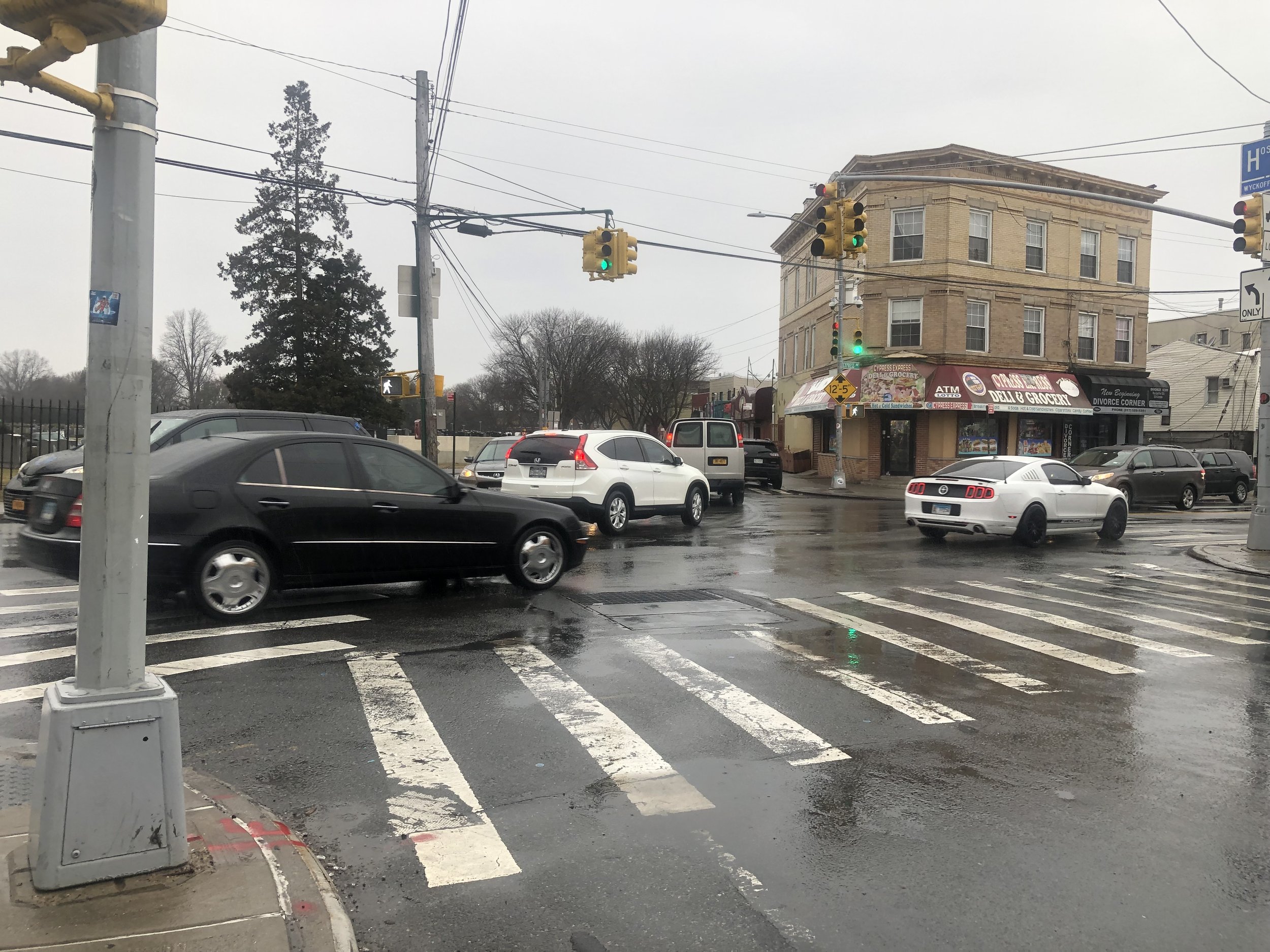DOT talks intervention for crash-prone Glendale intersection
/Queens officials, including City Councilmember Robert Holden and Assemblymember Jenifer Rajkumar rallied at the intersection of Cypress and Cooper with DOT Commissioner Ydanis Rodriguez to talk traffic safety. Photo via Bob Holden/Twitter
By Rachel Vick
A week after the latest fatal crash at a notorious Glendale intersection, officials from Queens and the Department of Transportation gathered at the site to outline their plan to make the deadly intersection safer.
Against the backdrop of the intersection at Cooper and Cypress Avenues, DOT Commissioner Ydanis Rodrguez assured residents standing by Tuesday that the agency would be taking action “very soon” to improve safety at the intersection where a man died after being hit by two drivers the week prior. What action would be taken, however, was less than certain.
“Help is on the way to this intersection and to the most dangerous intersections,” Rodriguez said. “We can avoid it, we can control it. I don’t take no as an answer… because we can be a role model.”
“New York City has to be the municipality that we can say, ‘We will turn our city as the safest one for pedestrians and cyclists,’” he added.
DOT staff is looking into design signal improvements for the intersection, Rodriguez said over the near-steady stream of honks punctuating speeches from the officials.
A 57-year-old man was struck by two different drivers on the evening of Feb. 12, and two teenagers were hospitalized Monday after their moped collided with a car — the latest in a long history of crashes on the corner.
From January of 2014 to December of 2021, there were 153 accidents on the site, according to Crash Mapper data.
The intersection has limited sight lines and traffic signals — one attendee pointed out that more than 10 drivers violated traffic patterns over the course of the press conference.
Rodriguez reiterated safety pledges issued during the first month of the Adams administration, including prioritizing new turn signals and “head-starts” that allow pedestrians to enter the intersection before vehicles can turn.
Part of the plan included increased enforcement for failing to yield and a “turn-calming program,” which would install a variety of tactics to create space between curbs near turns.
Transportation Alternatives Organizer Laura Shepard said “even in areas like this, which are widely considered extremely car dependent, people walk here, people bike here – we need to put them first.”
“Year after year lots of requests for all kinds of safety treatments are repeatedly denied and we know there are things that work,” she said.
“We’re in a city and we need to take steps to protect not just people in vehicles but people outside… and we can't keep doing the same things,” she added. “We can't say this is an accident knowing there are many steps we could have taken to prevent it.”
Legislators on hand included State Sen. Joseph Addabo, Assemblymember Jenifer Rajkumar and Councilmember Robert Holden, who said he’s had to field countless requests about traffic safety in the neighborhood.
Rajkumar also said that calls and messages from constituents about the intersection “have flooded” her inbox. Residents have suggested simultaneous crosswalks so pedestrians don’t have to share the road.
“This has to stop, and could all have been prevented,” Rajkumar said, pledging to support a number of road safety bills. “Through urgent action… we can and will get to zero [traffic deaths].”




